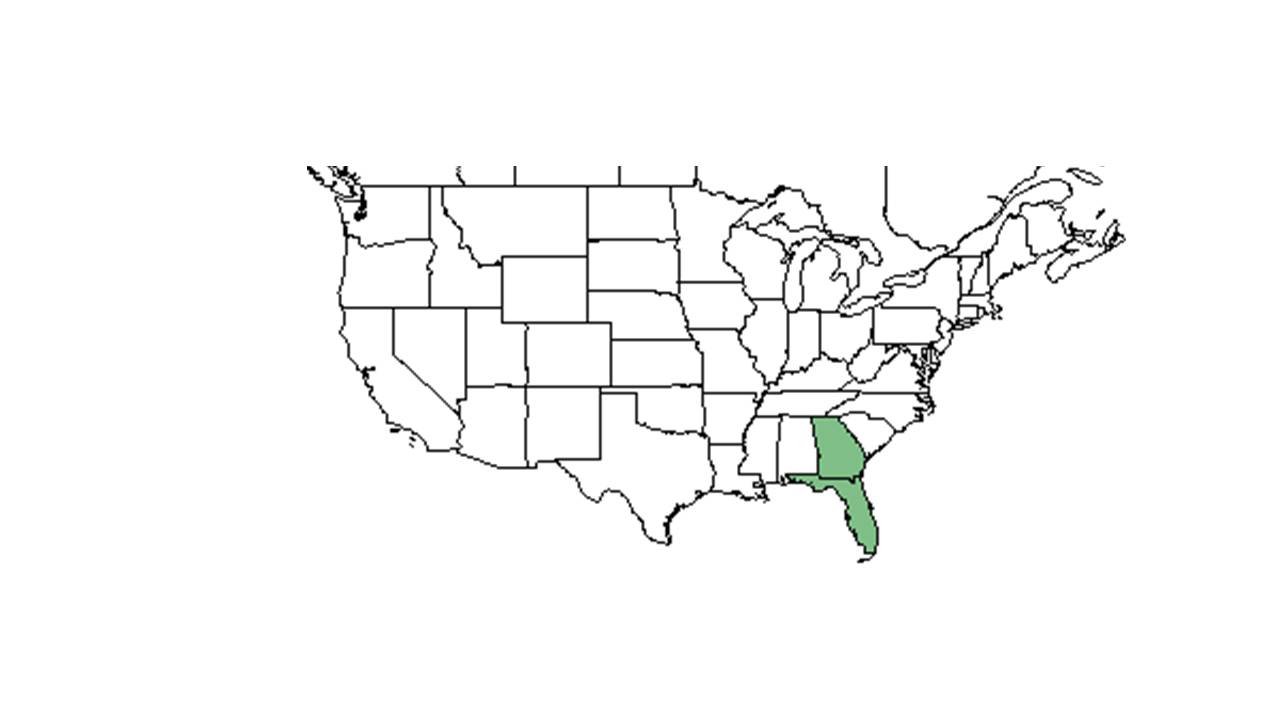Hypericum microsepalum
| Hypericum microsepalum | |
|---|---|
Error creating thumbnail: Unable to save thumbnail to destination
| |
| Scientific classification | |
| Kingdom: | Plantae |
| Division: | Magnoliophyta - Flowering plants |
| Class: | Magnoliopsida – Dicotyledons |
| Order: | Theales |
| Family: | Clusiaceae ⁄ Guttiferae |
| Genus: | Hypericum |
| Species: | H. microsepalum |
| Binomial name | |
| Hypericum microsepalum (Torr. & A. Gray) A. Gray ex S. Watson | |

| |
| Natural range of Hypericum microsepalum from USDA NRCS Plants Database. | |
Contents
Description
Hypericum microsepalum, H. brachyphyllum, and H. chapmanii are evergreen, arborescent plants that occur along coastal ecoclines of the Florida panhandle (nomenclature follows Godfrey 1988).[1]
Distribution
Ecology
Hypericum microsepalum and H. brachyphyllum are shrubby in habit, producing multiple shoots from the base, whereas H. chapmanii produces a single stem with thick, flaky bark (Godfrey 1988; Robson 2003).Cite error: Closing </ref> missing for <ref> tag Found in Pine savanna and seepage bog community types of Florida.[2] H. microsepalum is one of the most abundant seepage savanna shrubs that resprout from root crowns.[3]
Phenology
Seed dispersal
All species produce perfect flowers and dehiscent, septicidal capsules containing numerous seeds. Seeds are dispersed by gravity and occasionally by birds (Robson 2003).[4]
Seed bank and germination
All species have life spans 10 years and persistent seed banks.[5]
Fire ecology
“Biennial dormant and growing season fires affected Hypericum microsepalum. Stem densities were eight times greater after dormant season than growing season fires, but not significantly (P = 0.218). They also changed with time (P < 0.001), and were affected by treatment interactions (P = 0.039). Densities were 5 times greater after a first set of dormant season than growing season fires, but responses were variable (P = 0.258; Fig. 1b). Compared to initial levels, densities were 7 times greater after repeated dormant season fires (P < 0.001). After biennial growing season fires, densities were similar to those initially (P = 0.654). Densities were 13 times greater after repeated dormant season than growing season fires; this difference was not significant (P =0.060).”[3]
Pollination
Use by animals
Diseases and parasites
Conservation and Management
Cultivation and restoration
Photo Gallery
References and notes
- ↑ citations needed
- ↑ Drewa, P., W. Platt, et al. (2002). "Community Structure along Elevation Gradients in Headwater Regions of Longleaf Pine Savannas." Plant Ecology 160(1): 61-78.
- ↑ 3.0 3.1 Drewa, P. B., J. M. Thaxton, et al. (2006). "Responses of root-crown bearing shrubs to differences in fire regimes in Pinus palustris (Longleaf pine) savannas: exploring old-growth questions in second-growth systems." Applied Vegetation Science 9: 27-36.
- ↑ citations needed
- ↑ Cite error: Invalid
<ref>tag; no text was provided for refs namedCrandall 2013